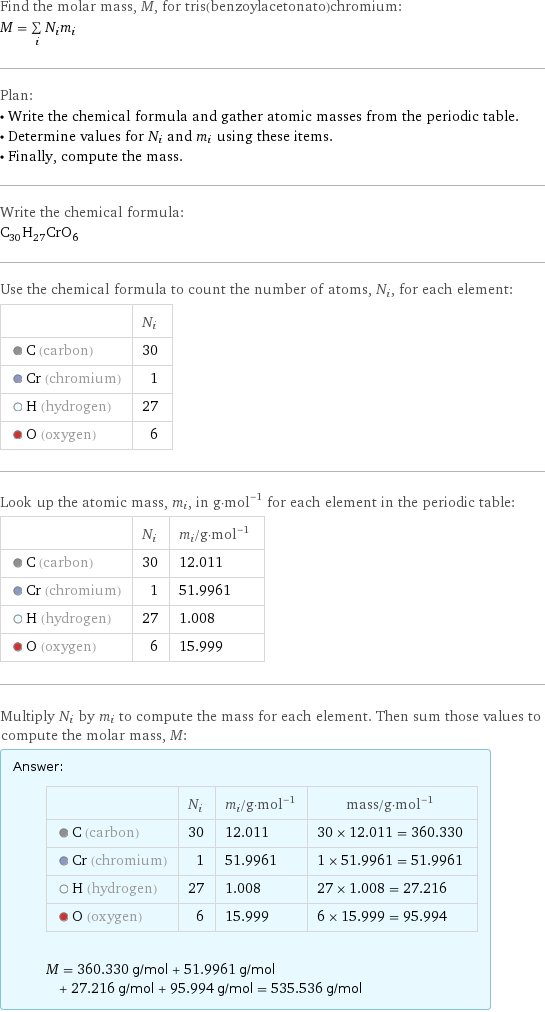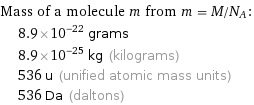Input interpretation

tris(benzoylacetonato)chromium | molar mass
Result

Find the molar mass, M, for tris(benzoylacetonato)chromium: M = sum _iN_im_i Plan: • Write the chemical formula and gather atomic masses from the periodic table. • Determine values for N_i and m_i using these items. • Finally, compute the mass. Write the chemical formula: C_30H_27CrO_6 Use the chemical formula to count the number of atoms, N_i, for each element: | N_i C (carbon) | 30 Cr (chromium) | 1 H (hydrogen) | 27 O (oxygen) | 6 Look up the atomic mass, m_i, in g·mol^(-1) for each element in the periodic table: | N_i | m_i/g·mol^(-1) C (carbon) | 30 | 12.011 Cr (chromium) | 1 | 51.9961 H (hydrogen) | 27 | 1.008 O (oxygen) | 6 | 15.999 Multiply N_i by m_i to compute the mass for each element. Then sum those values to compute the molar mass, M: Answer: | | | N_i | m_i/g·mol^(-1) | mass/g·mol^(-1) C (carbon) | 30 | 12.011 | 30 × 12.011 = 360.330 Cr (chromium) | 1 | 51.9961 | 1 × 51.9961 = 51.9961 H (hydrogen) | 27 | 1.008 | 27 × 1.008 = 27.216 O (oxygen) | 6 | 15.999 | 6 × 15.999 = 95.994 M = 360.330 g/mol + 51.9961 g/mol + 27.216 g/mol + 95.994 g/mol = 535.536 g/mol
Unit conversion

0.53554 kg/mol (kilograms per mole)
Comparisons

≈ 0.74 × molar mass of fullerene ( ≈ 721 g/mol )

≈ 2.8 × molar mass of caffeine ( ≈ 194 g/mol )

≈ 9.2 × molar mass of sodium chloride ( ≈ 58 g/mol )
Corresponding quantities

Mass of a molecule m from m = M/N_A: | 8.9×10^-22 grams | 8.9×10^-25 kg (kilograms) | 536 u (unified atomic mass units) | 536 Da (daltons)

Relative molecular mass M_r from M_r = M_u/M: | 536